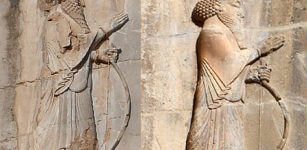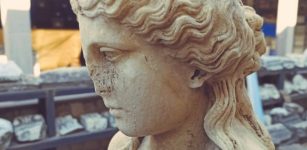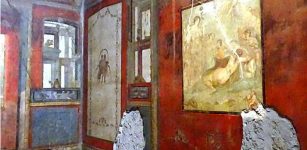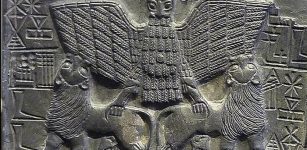On This Day In History: Statue Of Venus de Milo Is Discovered On The Aegean Island Of Milos – On Apr 8, 1820
AncientPages.com - On April 8, 1820, the Greek farmer Yorgos Kentrotas stumbled across a damaged statue inside a buried niche within the ancient city ruins of Milos, Greece.
Venus de Milo on display at the Louvre. Image credit: Shawn Lipowski - CC BY-SA 3.0
However, the exact circumstances in which the statue was discovered are uncertain.
Today, the place - famous for being next to the Catacombs and the Roman theatre - is a small town of Tripiti on the island of Milos, in the Aegean, which was then a part of the Ottoman Empire.
The French sailor Jules Dumont D'urville bought the statue in the name of the French ambassador to Turkey, the Marquis de Rivière. It was identified as a representation of Venus. In 1821, it became a gift of the Marquis de Rivière to Louis XVIII (1755–1824, king of France and the first ruler of the restored monarchy following the French Revolution. The figure, at the time, had hands, but it lost them when D'urville's ship smashed into rocks near the island.
The king donated it to the Louvre Museum in 1821.
It is said that the artwork is five feet tall and was carved from the Parian marble (from the island of Paros) by an anonymous creator from a school of Hellenistic sculpture known as the Rhodian School, dated to about 130-100 BC.
Some researchers believe that the creator may have been the Agesandros of Rhodes. The sculpture imitates the Venus of Capua (4th century BC).
The half-naked goddess has a robe lowered below her hips (like Venus lifting her hair from the Vatican museum). The left leg is supported by something. It's supposed to be on a turtle. Once in her left hand, she probably held an apple, and the limb was kept on a column supporting her weight.
Today, Venus de Milo (also known as Aphrodite of Milos) represents one of the world's most iconic works of art.
An inscription that is not displayed with the statue states: "Alexandros, son of Menides, citizen of Antioch of Maeander, made the statue."
Despite lacking attributes, this marble statue's size and attitude allow its identification as the goddess Aphrodite, often represented half nude. However, the fact that the figure was discovered on the island of Melos has led some to think she may be Amphitrite, the Greek goddess of the sea, venerated on the island of Melos.
Though reconstructed to standing, the statue's arms were never found. The general composition derives from a 4th-century-BC Corinthian figure, and the artifact is an example of the Hellenistic sculptural tradition.
AncientPages.com





















